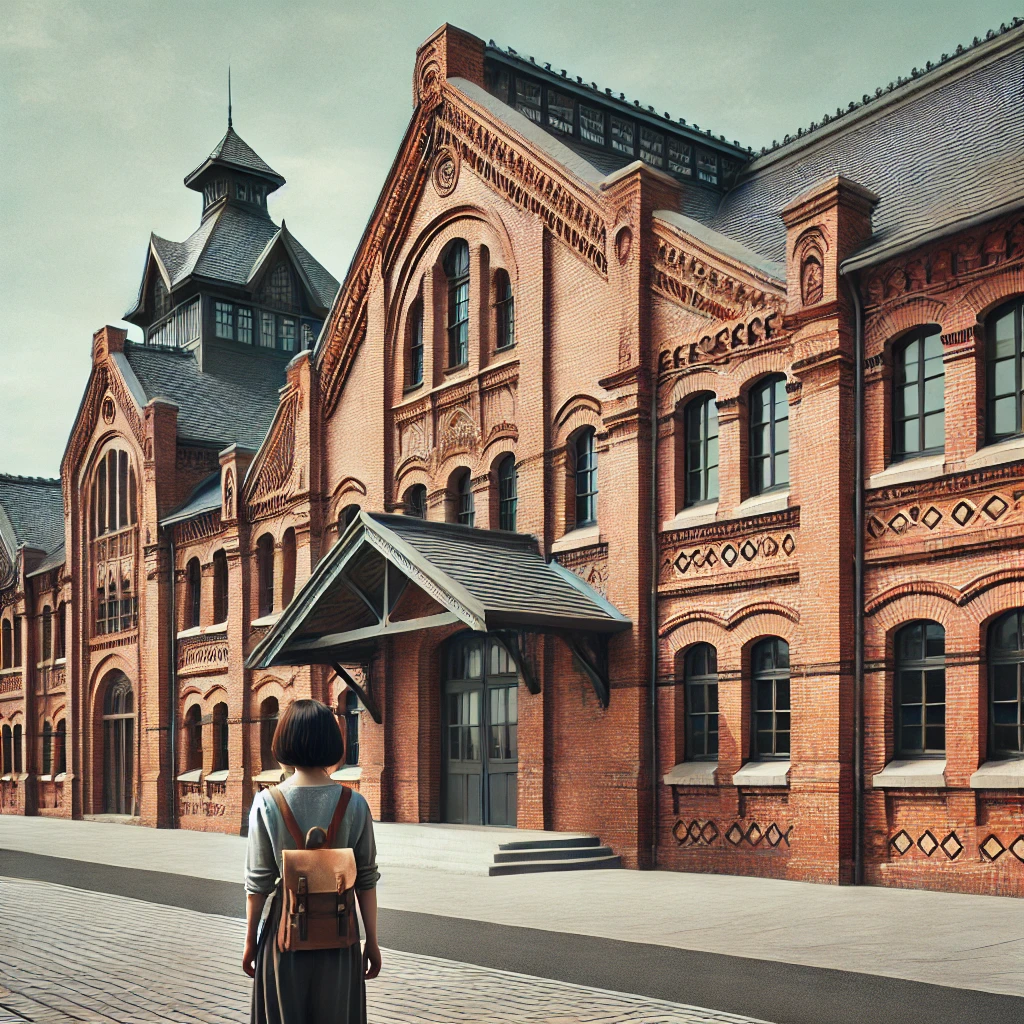ChatGPT:
Ely is a historic city in Cambridgeshire, England, known for its stunning medieval architecture and charming atmosphere. The city is most famous for Ely Cathedral, a striking structure with its unique octagonal tower, often called the “Ship of the Fens” due to its visibility for miles across the flat landscape. Ely also has a rich history, dating back to the Anglo-Saxon period, and it played a significant role in England’s religious and political history.
Despite being relatively small, Ely offers a relaxed and peaceful atmosphere with plenty of green spaces and an active local community, making it an appealing destination for those seeking a quiet retreat in a historical setting.
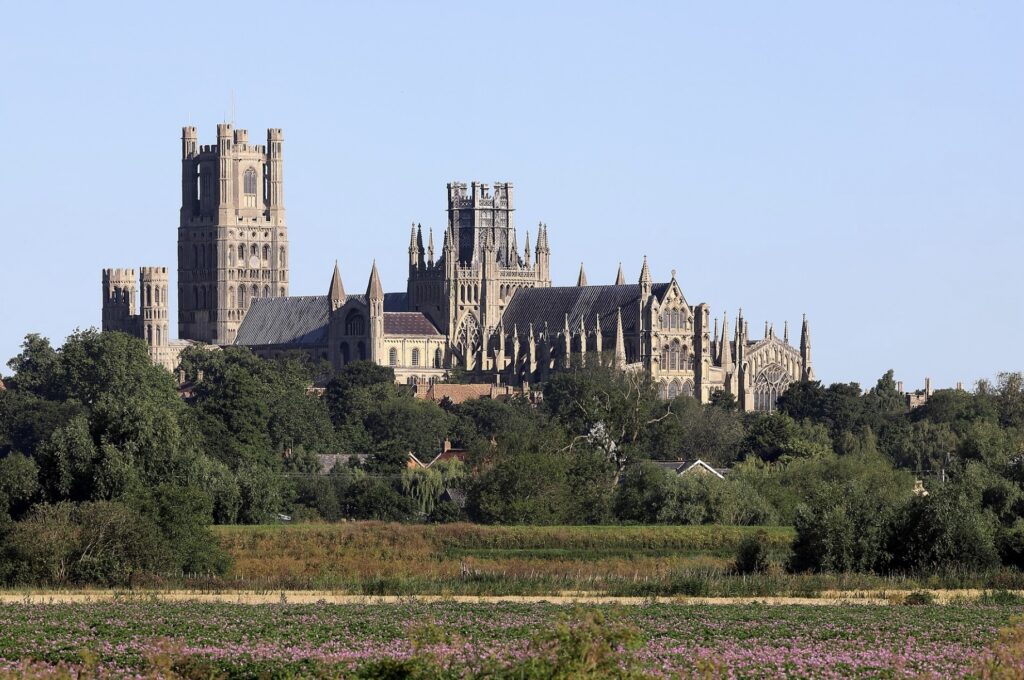
Ely’s origin, history, and development are deeply rooted in its strategic location and religious significance, beginning with its foundation in the early medieval period.
Origin
Ely’s name is thought to derive from the Old English word “Ēlġē,” meaning “island of eels,” a reference to the area’s rich aquatic life, particularly the eels found in the surrounding wetlands or fens. Ely was originally an island amid these fens before they were drained in later centuries, giving the area an isolated and unique character.
Early History and Religious Foundation
The city’s historical significance began in the 7th century when St. Etheldreda, a Saxon princess, founded a monastery on the site in 673 AD. Etheldreda, who became the abbess of the monastery, was later canonized, and her cult brought pilgrims to the area. This initial religious foundation set Ely apart as a major spiritual center in early medieval England. After her death, her monastery continued to thrive, but it was destroyed by Viking raids in the late 9th century.
Ely’s religious importance was restored in 970 when a Benedictine abbey was established on the same site. The abbey’s influence grew significantly during the Anglo-Saxon period, contributing to the wealth and status of Ely.
Norman Conquest and Cathedral Construction
In 1071, Ely became the center of resistance against William the Conqueror, led by Hereward the Wake. The Isle of Ely, as it was then, provided a natural fortress during this rebellion. However, Ely was eventually subdued, and William imposed his control over the region.
Ely’s prominence continued under the Normans. In 1083, construction of the current Ely Cathedral began, one of the most iconic examples of Norman and Gothic architecture in England. Completed over several centuries, the cathedral became the heart of the town, drawing pilgrims and visitors. The octagonal lantern tower, completed in 1342, is one of its most distinctive features and remains an architectural marvel.
Development of Ely
Ely remained primarily a religious and rural community for much of the Middle Ages, governed by the powerful bishops of Ely, who held significant secular authority over the area. The town grew slowly around the cathedral, with a local economy that was largely based on agriculture, fishing (notably eels), and trade related to the abbey.
In the 17th century, the draining of the Fens, led by Dutch engineer Cornelius Vermuyden, transformed the region. This drainage project reduced the flooding of the land, making it more suitable for agriculture, and allowed for further settlement in and around Ely. However, the town retained much of its medieval character.
19th Century and Modern Development
The arrival of the railway in the 19th century significantly boosted Ely’s development, linking it to larger cities like Cambridge and London. This helped expand its economy, making it a local market town as well as a commuter town for nearby cities.
In 1974, Ely’s historic diocese was reorganized, and while it retains its status as a cathedral city, its religious governance became less central to its daily life.
In the modern era, Ely has become known for its picturesque charm, attracting visitors with its historical significance, riverside beauty, and quaint town center.
Ely is rich in historical monuments and tourist attractions that showcase its religious, architectural, and cultural heritage. Here’s a list of the key sites to explore:
1. Ely Cathedral
- The most famous landmark, Ely Cathedral is an architectural marvel. Its Norman and Gothic styles, combined with the impressive Octagon Tower and Lady Chapel, make it one of England’s most iconic cathedrals. Visitors can tour the cathedral, climb the towers, and learn about its history through guided tours.
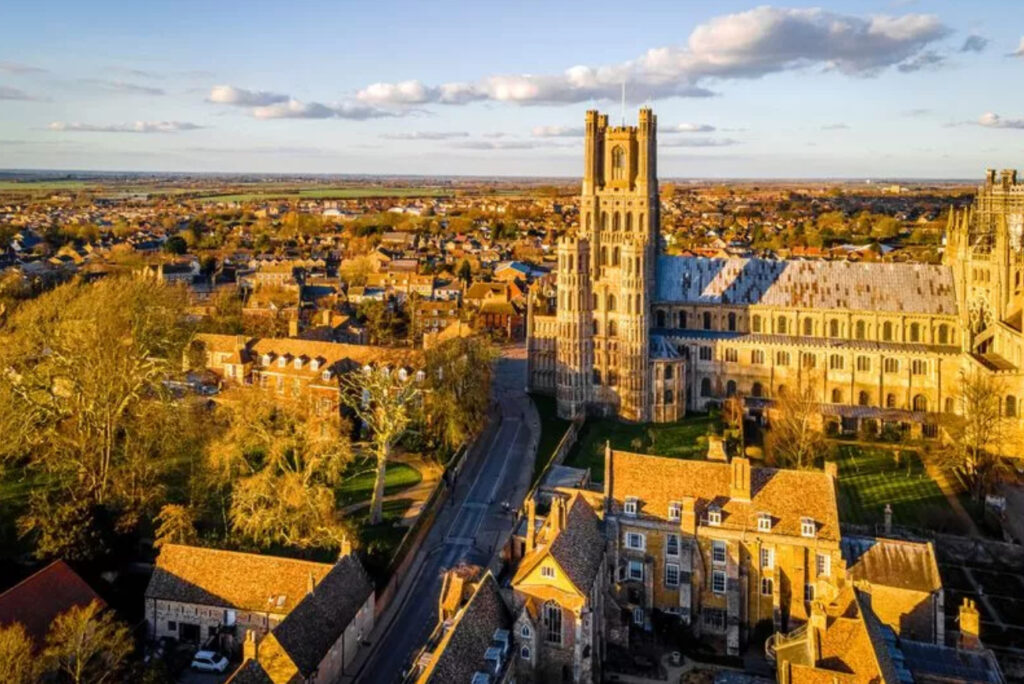
2. Oliver Cromwell’s House
- This 17th-century house was once the home of Oliver Cromwell, the military and political leader during the English Civil War. The house is now a museum, offering insight into Cromwell’s life, with period furnishings and interactive displays about his role in English history.
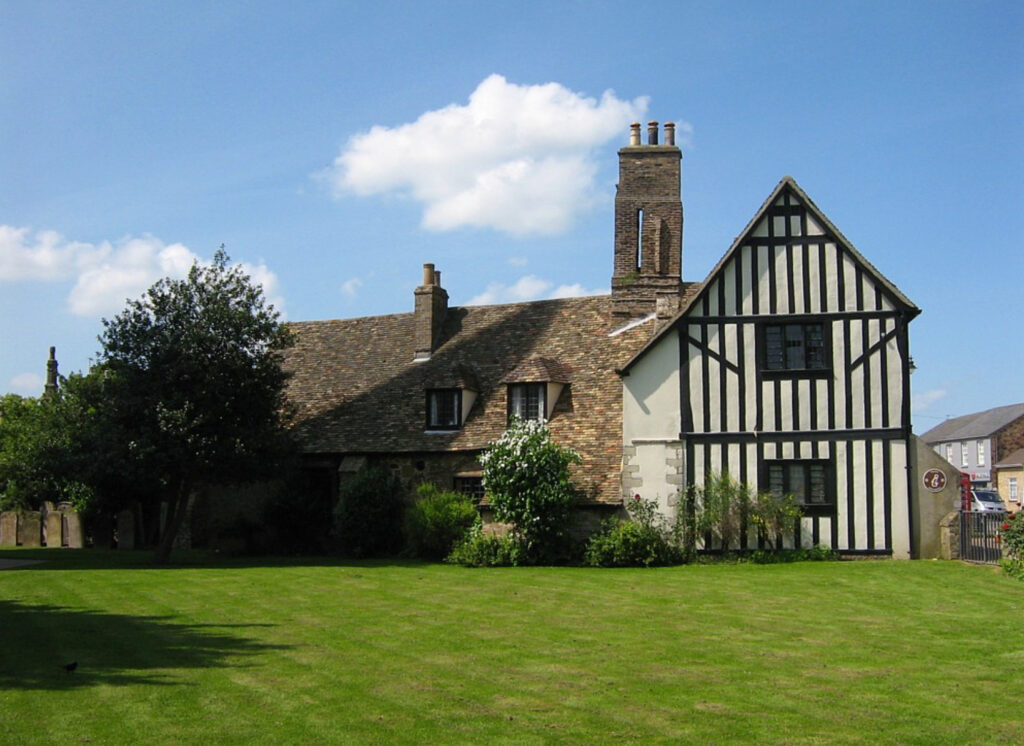
3. Ely Museum
- Housed in the former old gaol (jail), this small museum provides an overview of the history of Ely and the surrounding Fens, from prehistoric times through to the present day. It includes exhibits on the region’s unique geography and its social and economic history.
4. The Stained Glass Museum
- Located within Ely Cathedral, this museum features a stunning collection of stained glass windows from across the UK and Europe, dating from the medieval period to modern times. It offers an in-depth look at the art of stained glass making.
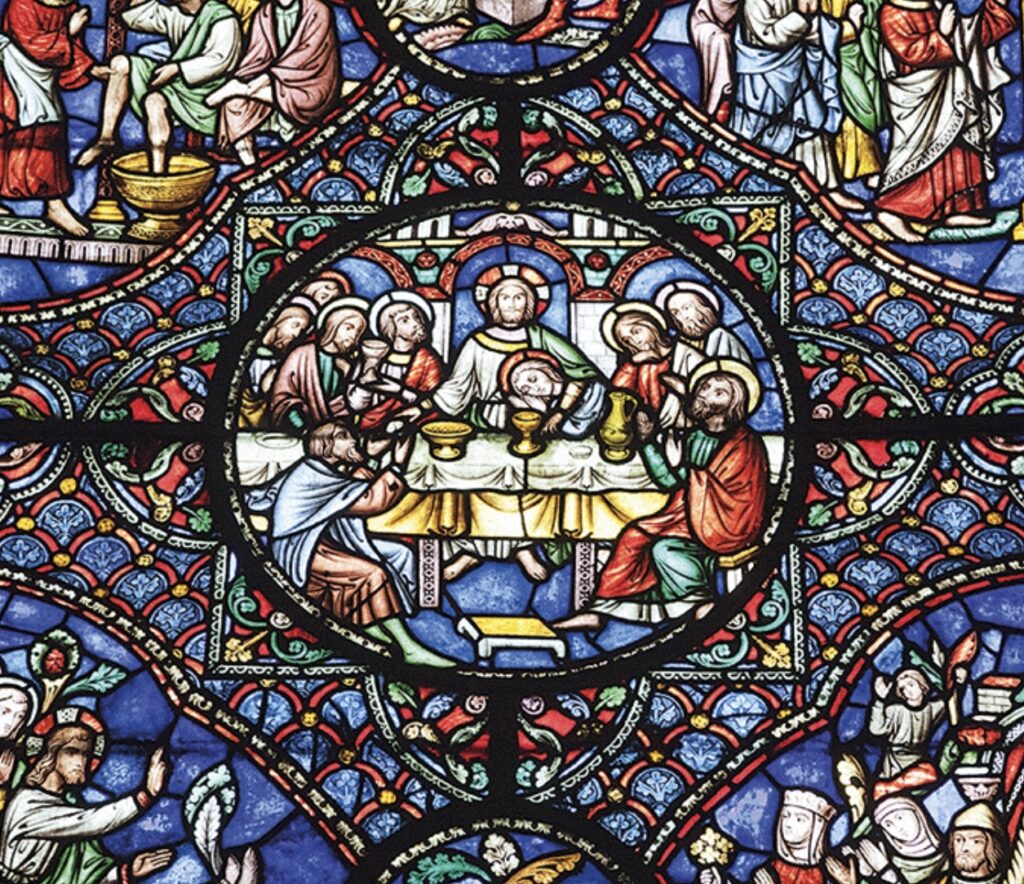
5. Jubilee Gardens and Ely Riverside
- The gardens are a peaceful spot along the River Great Ouse, perfect for walking or relaxing. From here, visitors can also take boat trips along the river, explore nearby trails, or enjoy the scenic views of the Ely waterfront.
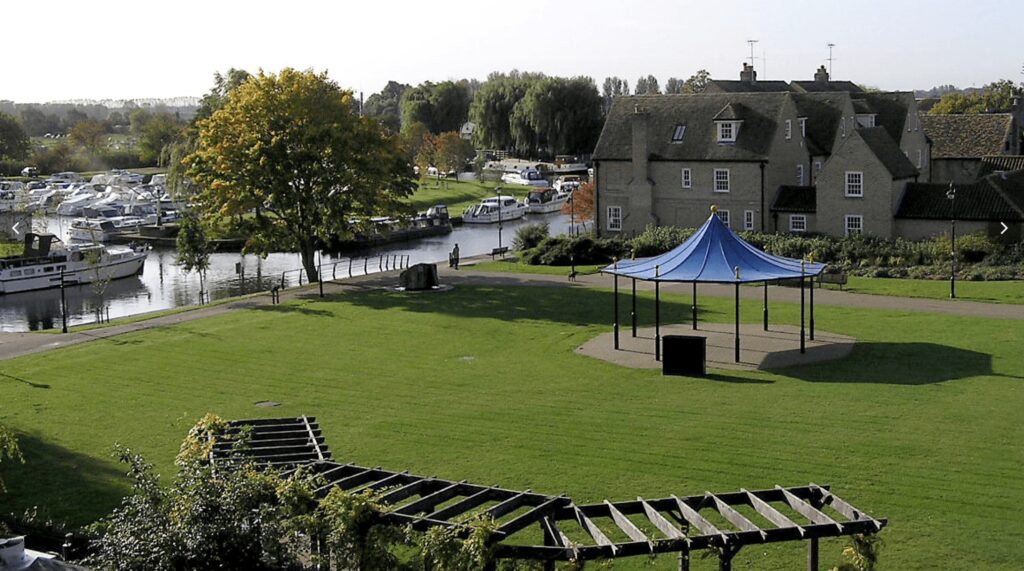
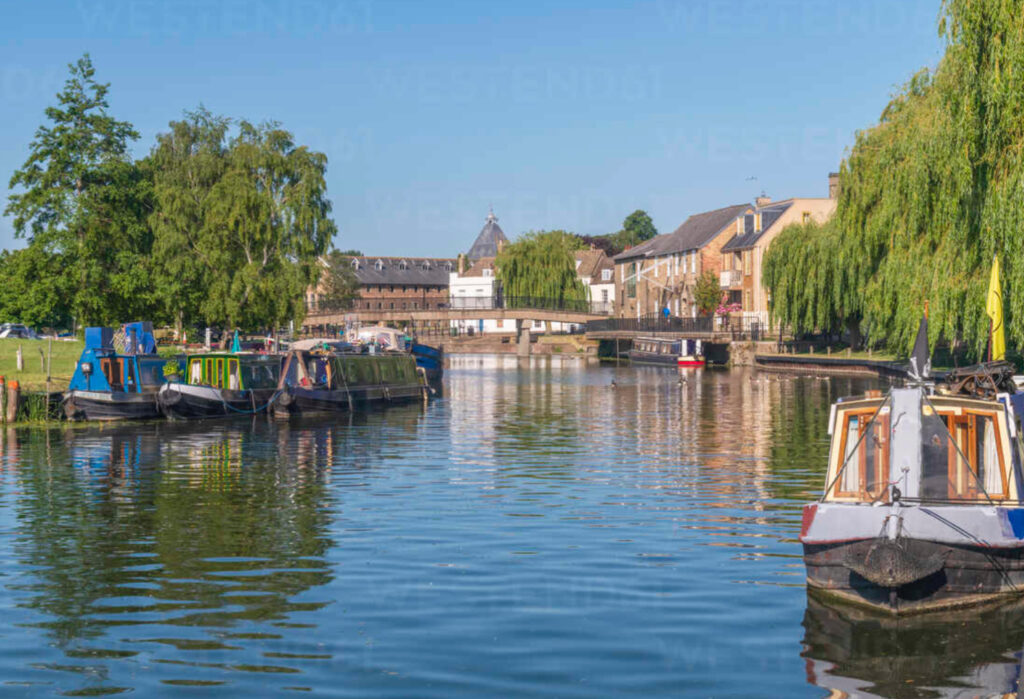
6. Prior Crauden’s Chapel
- This small, 14th-century chapel is part of the Ely Cathedral complex and is an example of medieval religious architecture. It was once the private chapel for the prior of Ely’s Benedictine monastery.
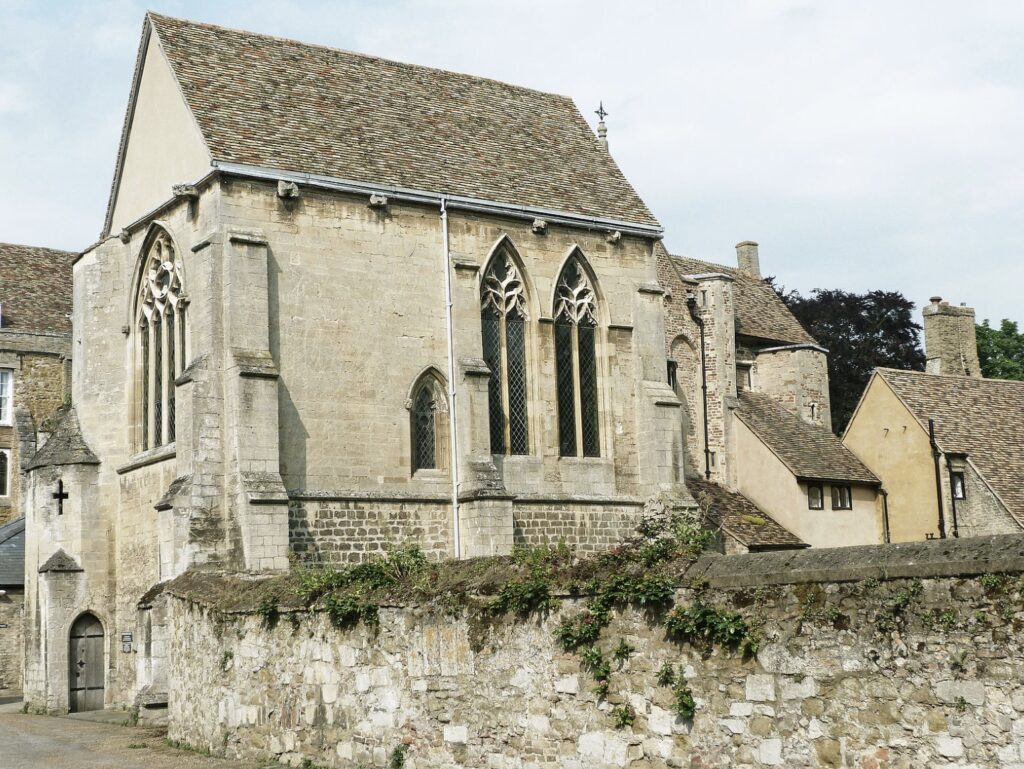
7. Ely Porta
- Also known as the Ely College Gatehouse, this medieval gatehouse was part of the original Benedictine monastery. It now forms part of King’s Ely School but is still an impressive historical structure.
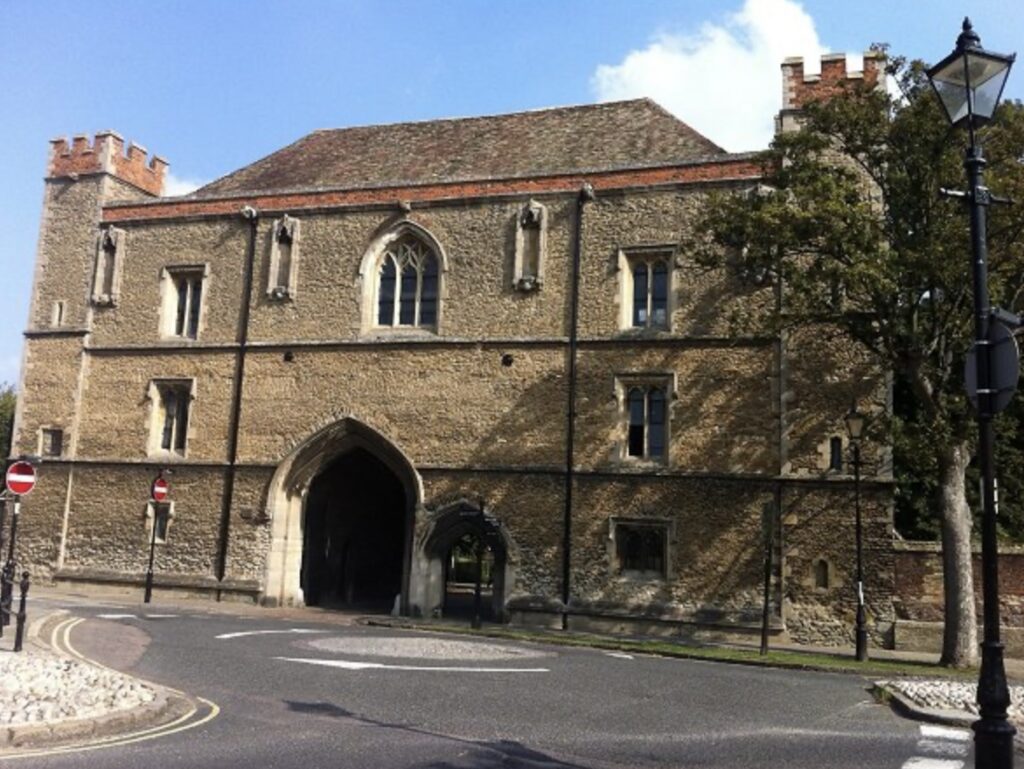
8. The Bishop’s Palace
- Dating back to the 15th century, this grand building was the residence of the bishops of Ely. Though it is now part of King’s Ely School and not open to the public, it remains a notable architectural and historical site in the city.
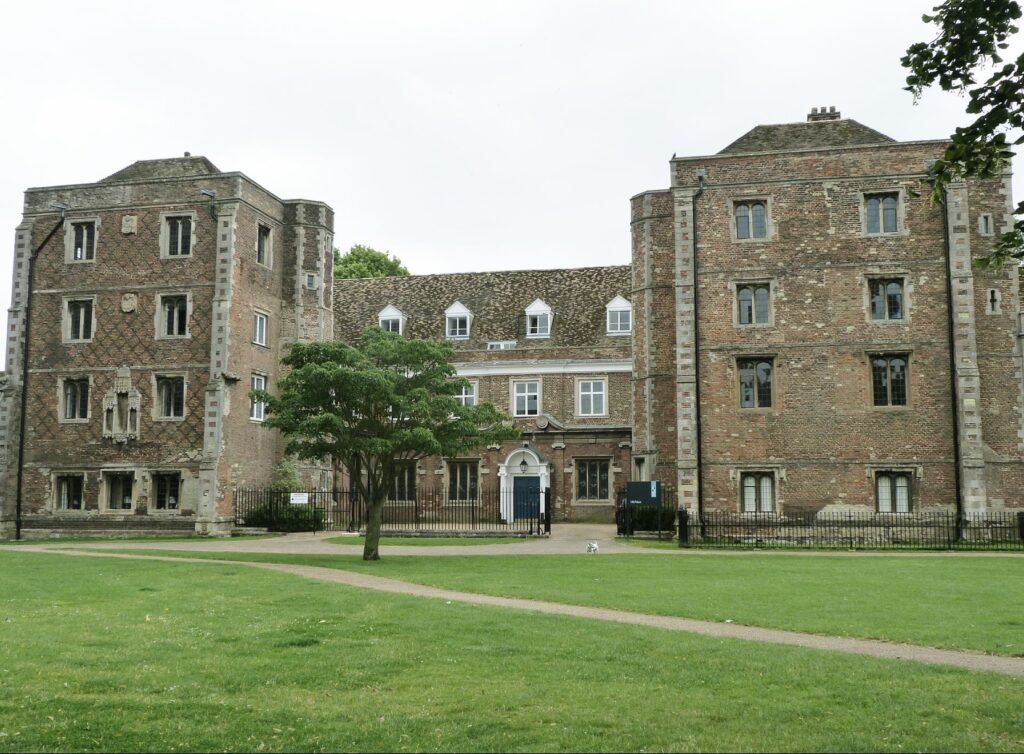
9. Roswell Pits Nature Reserve
- Located just outside Ely, this nature reserve is a great spot for birdwatching and exploring the local wildlife. The pits are former clay and gravel workings that have become lakes and wetlands, attracting a variety of bird species and other wildlife.
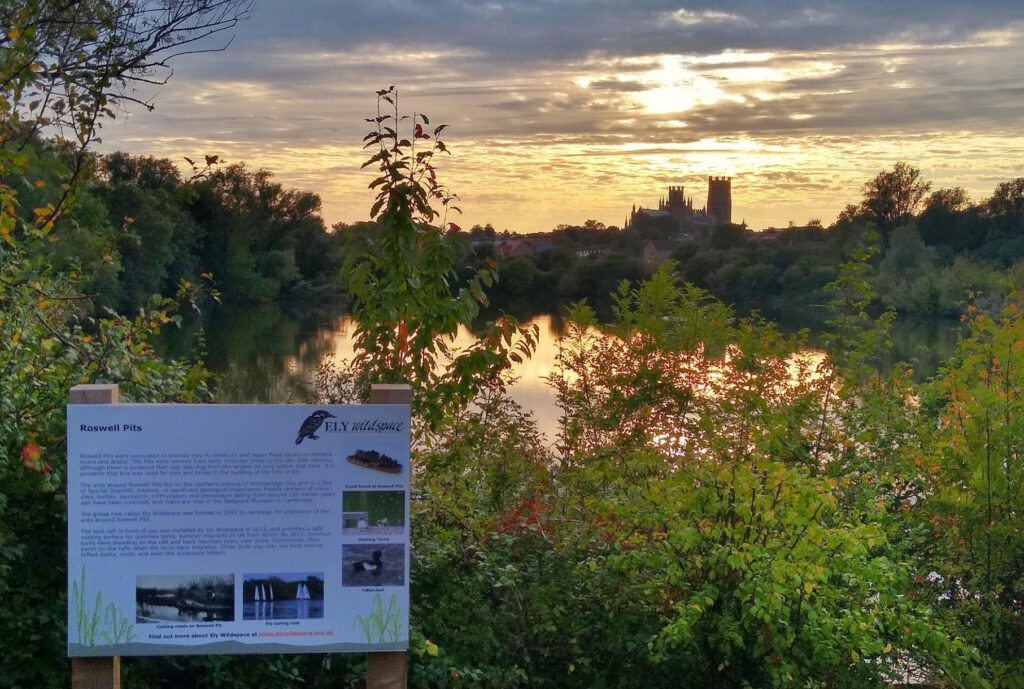
10. Eel Festival and Eel Trail
- The Ely Eel Festival celebrates the city’s historical connection with eels, featuring food stalls, entertainment, and demonstrations. Visitors can also follow the Eel Trail, a walking route through the city that highlights key historical landmarks related to Ely’s heritage.
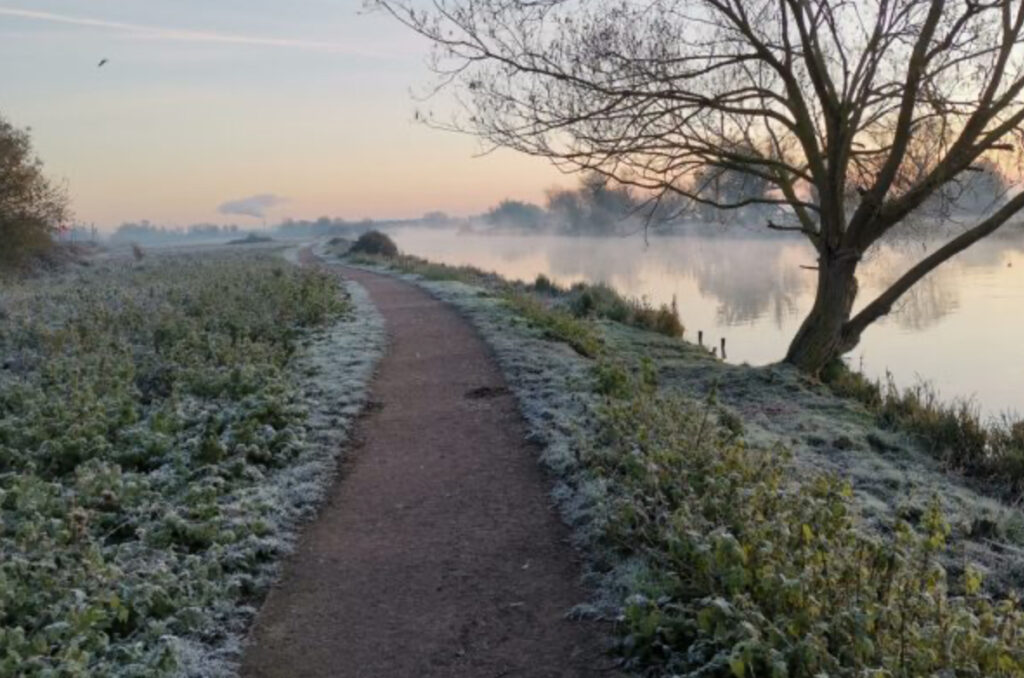
These attractions highlight Ely’s religious history, its connection to Oliver Cromwell, and its picturesque natural surroundings, making it a charming destination for both history buffs and nature lovers.
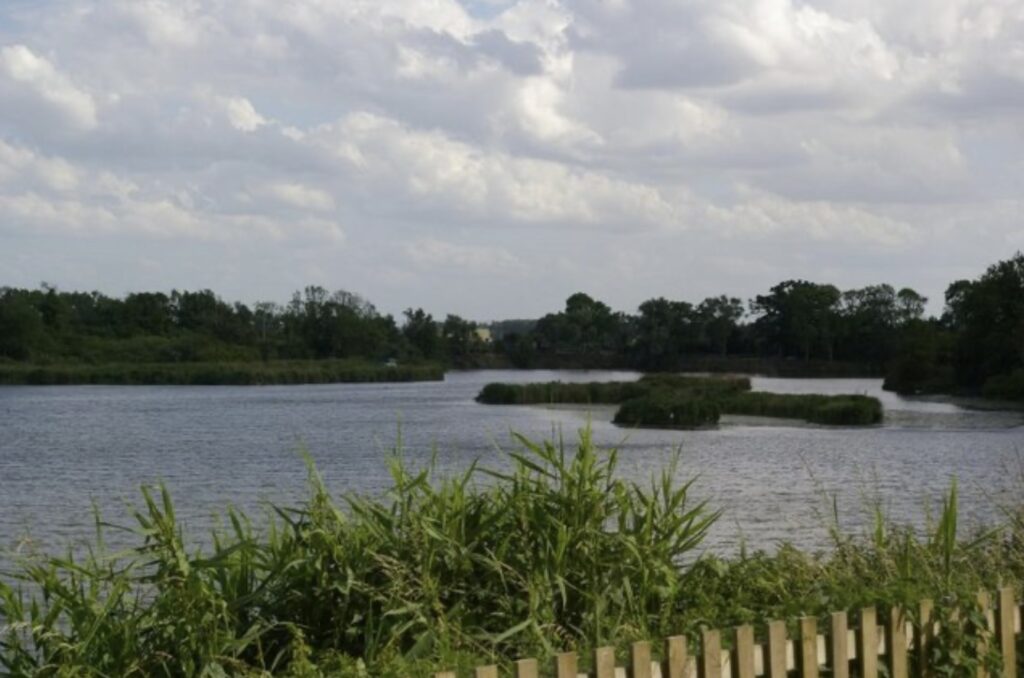
Ely Cathedral, located in the heart of Ely, Cambridgeshire, is one of the most remarkable examples of medieval architecture in England.
Construction Date
The construction of the present Ely Cathedral began in 1083, under the direction of Abbot Simeon, after the Norman Conquest of England. It was built on the site of an earlier church founded by St. Etheldreda in 673 AD. The cathedral was largely completed by the mid-12th century, but significant additions and alterations were made in the centuries that followed, particularly in the 13th and 14th centuries.
Architectural Features
- Norman Romanesque Architecture
- The original structure of Ely Cathedral was built in the Romanesque (Norman) style, characterized by rounded arches, thick walls, and large, solid structures. The western transept and nave retain these Romanesque elements, with their massive columns and round-headed arches.
- The Octagon Tower
- One of the most famous and unique features of Ely Cathedral is its Octagon Tower, built between 1322 and 1342 after the original Norman tower collapsed in 1322. This central tower is an extraordinary feat of medieval engineering and design. Unlike other cathedrals with square towers, the Octagon Tower is a massive eight-sided structure that soars above the crossing of the nave and transepts. It is topped with a wooden lantern, which allows natural light to flood the interior. The lantern is richly decorated with wood carvings and beautiful artwork, making it a striking focal point within the cathedral.
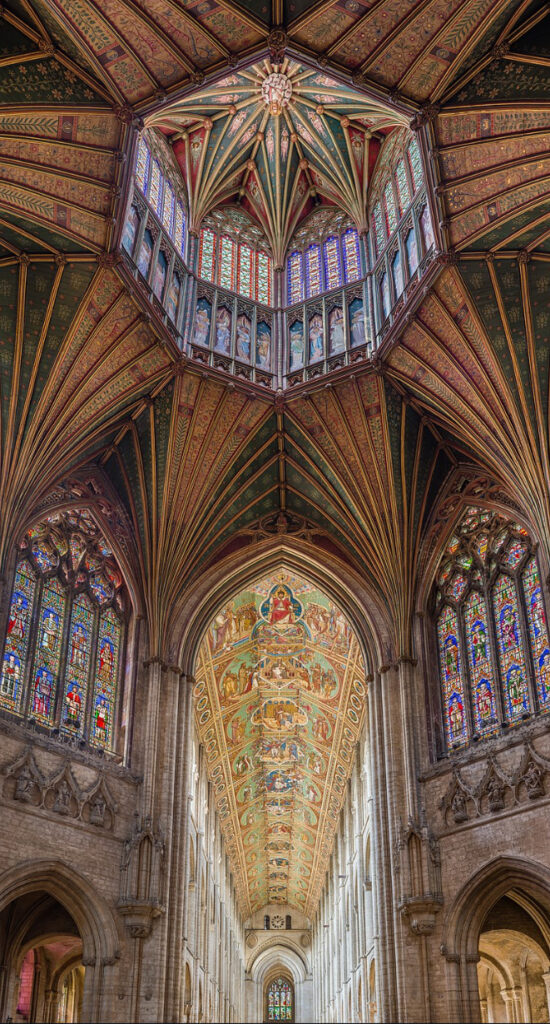
- The Lady Chapel
- Added in the 14th century, the Lady Chapel is another distinctive feature of Ely Cathedral. It is the largest of its kind in England, dedicated to the Virgin Mary, and showcases ornate Gothic architecture. The chapel is known for its intricate stone carvings and large, beautiful windows. Unfortunately, many of the statues in the chapel were destroyed during the English Reformation, leaving behind empty niches and defaced figures, though this adds a unique historical atmosphere.
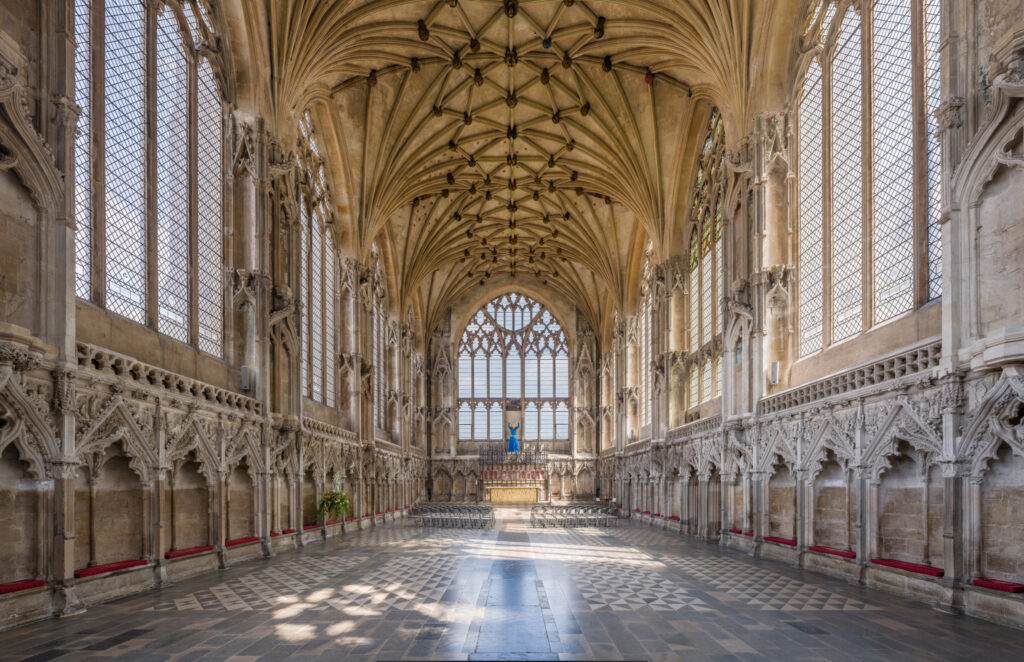
- The West Front
- Ely Cathedral’s West Front is an imposing and grand structure, featuring a combination of Romanesque and Gothic styles. The central part of the west front includes a large Galilee porch, a 13th-century addition with richly decorated arches and intricate carvings. The west towers, though originally planned as two, were never completed, and only one remains.
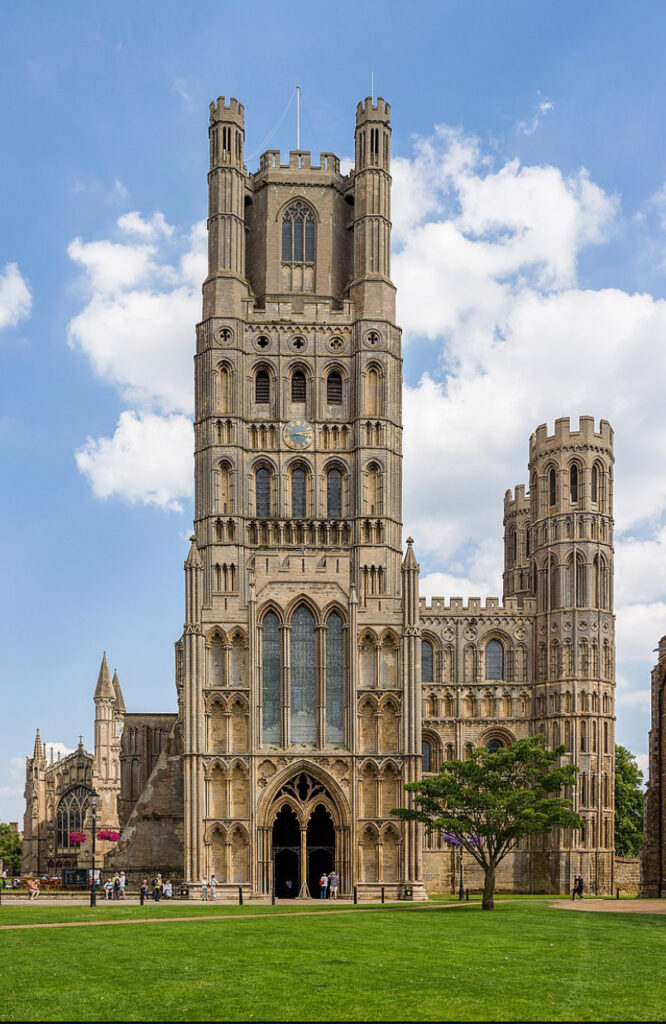
- The Stained Glass
- Ely Cathedral houses impressive stained glass windows from different periods, notably in the nave and the Lady Chapel. The glass dates from medieval times, as well as the Victorian era, when several windows were added during restoration efforts.
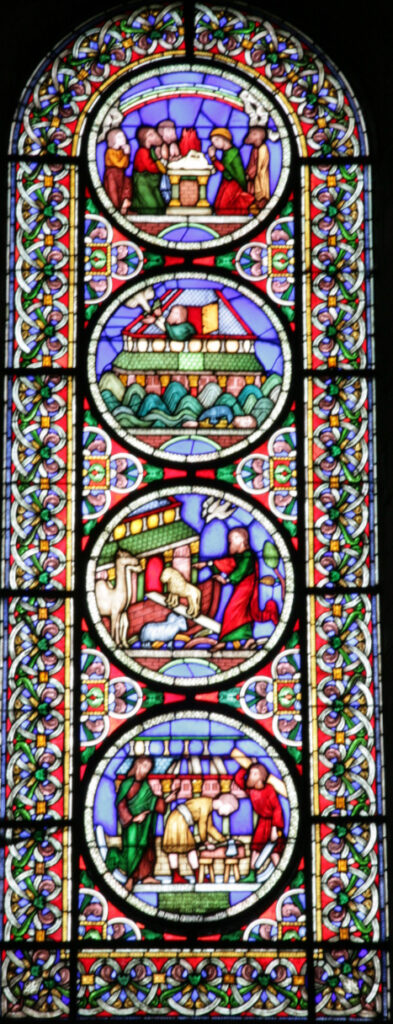
- The Choir and Presbytery
- The choir and presbytery feature detailed Gothic work from the 13th century. The choir stalls are adorned with beautiful medieval wood carvings, and the ceiling above is decorated with painted panels depicting biblical scenes and figures of saints.
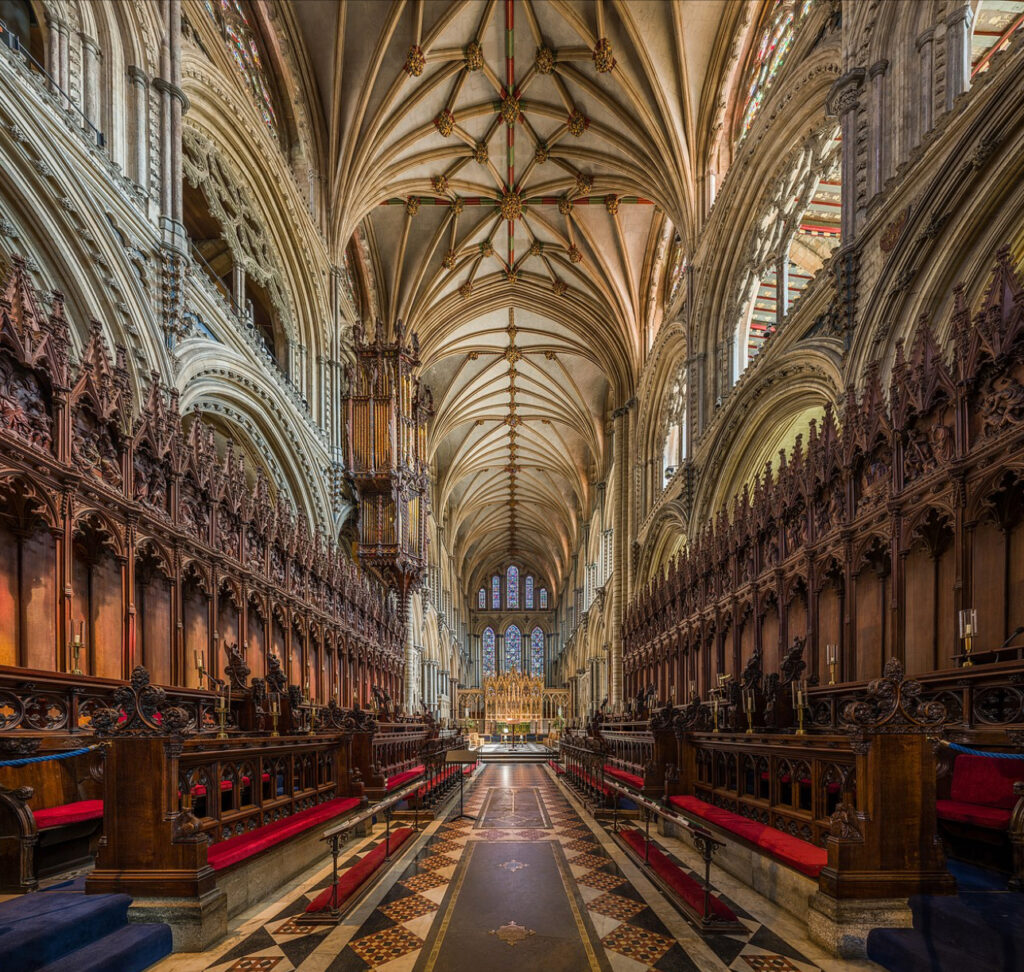
- The Nave
- Ely Cathedral’s nave is one of the longest in England, measuring 250 feet. It is a grand space supported by massive Norman pillars, with a high vaulted ceiling, creating an impressive sense of scale. The painted ceiling of the nave is a Victorian addition, featuring biblical scenes and religious motifs.
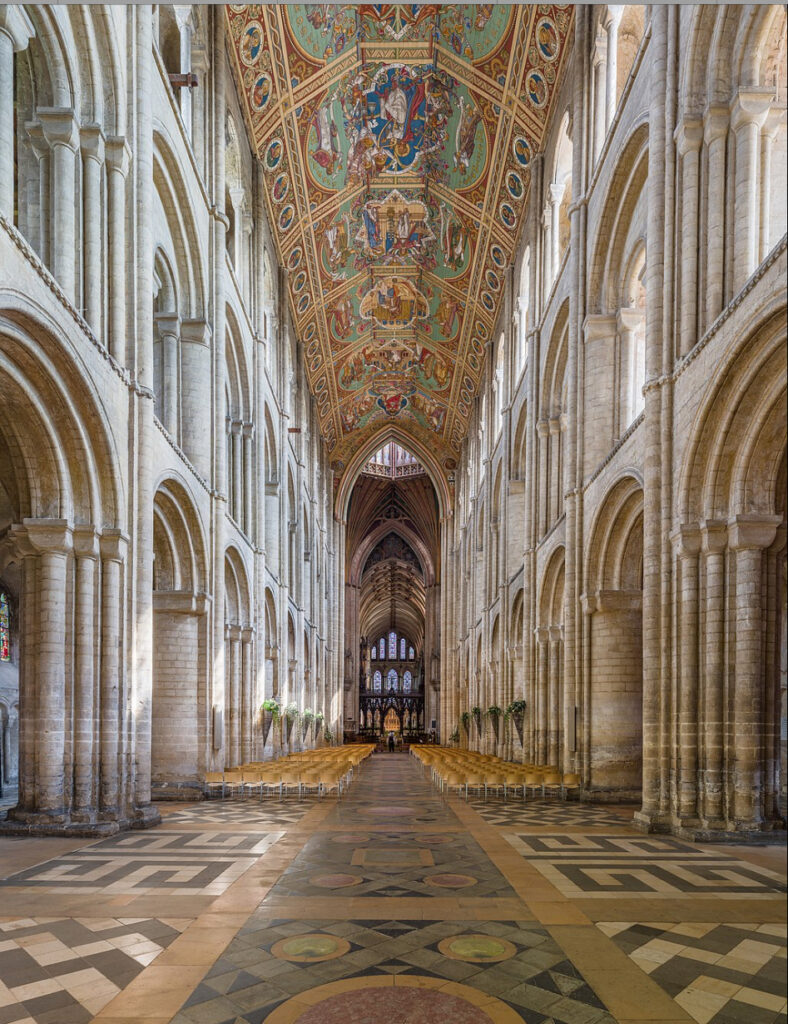
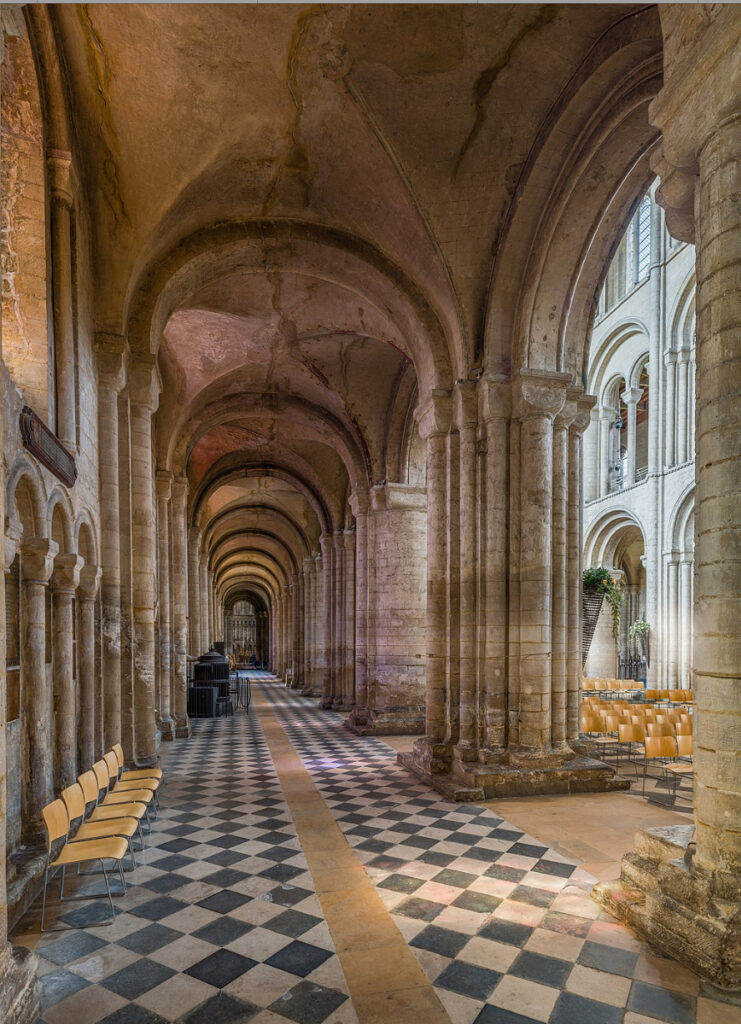
Cultural and Religious Importance
Ely Cathedral has been a site of Christian worship for over 1,000 years, and it continues to serve as the seat of the Bishop of Ely. It is also a significant tourist destination, not only for its architectural splendor but also for its role in England’s religious and political history, particularly in connection with figures such as St. Etheldreda and Oliver Cromwell.
The area around Ely offers a variety of hiking trails that cater to different levels of ability, from easy riverside walks to more challenging routes through the scenic Fenlands. Here’s a list of trails with varying degrees of difficulty:
1. Ely Riverside Walk (Easy)
- Distance: 3 miles (4.8 km)
- Duration: 1-2 hours
- Description: This is a gentle, flat walk along the banks of the River Great Ouse. Starting from Jubilee Gardens, the trail takes you along the river, offering lovely views of the Ely Cathedral and the surrounding countryside. It’s an easy, accessible route, perfect for beginners or families.
2. Ely to Little Downham Circular (Easy to Moderate)
- Distance: 5 miles (8 km)
- Duration: 2-3 hours
- Description: This circular walk begins in Ely and takes you to the village of Little Downham. It follows mostly flat terrain along country paths and quiet roads, offering beautiful views of the Fens and local farmlands. Suitable for a leisurely walk with moderate stamina.
3. Wicken Fen Nature Reserve Walk (Easy to Moderate)
- Distance: Various routes from 2 to 8 miles (3 to 13 km)
- Duration: 1-4 hours
- Description: Wicken Fen is one of the oldest nature reserves in England and offers a network of flat, easy-to-moderate trails. You can choose a shorter route or take on the longer walk to explore the fenland landscapes, wildlife habitats, and waterways. The longer routes can be more demanding in terms of time, but the terrain is mostly flat.
4. Stretham Circular Walk (Moderate)
- Distance: 6.5 miles (10.5 km)
- Duration: 2.5-3 hours
- Description: Starting in the village of Stretham, located a few miles south of Ely, this circular walk takes you through open fields, alongside drainage ditches, and through quiet rural roads. It’s relatively flat but offers a longer distance and varied countryside views, making it suitable for those looking for a moderate hike.
5. Fen Rivers Way (Moderate to Challenging)
- Distance: 50 miles (80 km) in total (can be divided into sections)
- Duration: Multi-day or segmented day hikes
- Description: This long-distance trail runs from Cambridge to King’s Lynn, following the River Great Ouse. While the full trail is 50 miles, you can tackle shorter sections starting or ending in Ely. The walk offers a mix of riverside paths, open fenland, and charming villages. The challenge lies in its length rather than its terrain, as the landscape is generally flat.
6. Ely to Wicken Fen Linear Walk (Moderate)
- Distance: 7.5 miles (12 km)
- Duration: 3-4 hours
- Description: This walk starts in Ely and leads you to the Wicken Fen Nature Reserve. It’s a flat, scenic route that passes through open fenland, along the river, and through quiet lanes. It’s a great option for those looking for a longer day hike with relatively easy terrain.
7. Ouse Washes Circular Walk (Moderate to Challenging)
- Distance: 10 miles (16 km)
- Duration: 4-5 hours
- Description: This longer and more challenging walk takes you around the Ouse Washes, an internationally important wetlands area. Starting from Welney, about 10 miles from Ely, the trail follows the washland and flood banks, offering views of wildlife, particularly bird species. The distance and exposed fenland can make this a more demanding hike, especially in windy conditions.
8. Devil’s Dyke Walk (Moderate to Challenging)
- Distance: 11 miles (18 km)
- Duration: 5-6 hours
- Description: Located about 15 miles from Ely, Devil’s Dyke is an ancient earthwork stretching from Reach to Newmarket. This longer walk along the top of the dyke provides expansive views of the surrounding countryside. The terrain is mostly flat, but the length and occasional steeper sections make it more challenging.
These trails offer a range of experiences, from easy riverside strolls to more demanding fenland hikes, allowing you to explore the natural beauty and wildlife of the Ely region and the Cambridgeshire Fens.
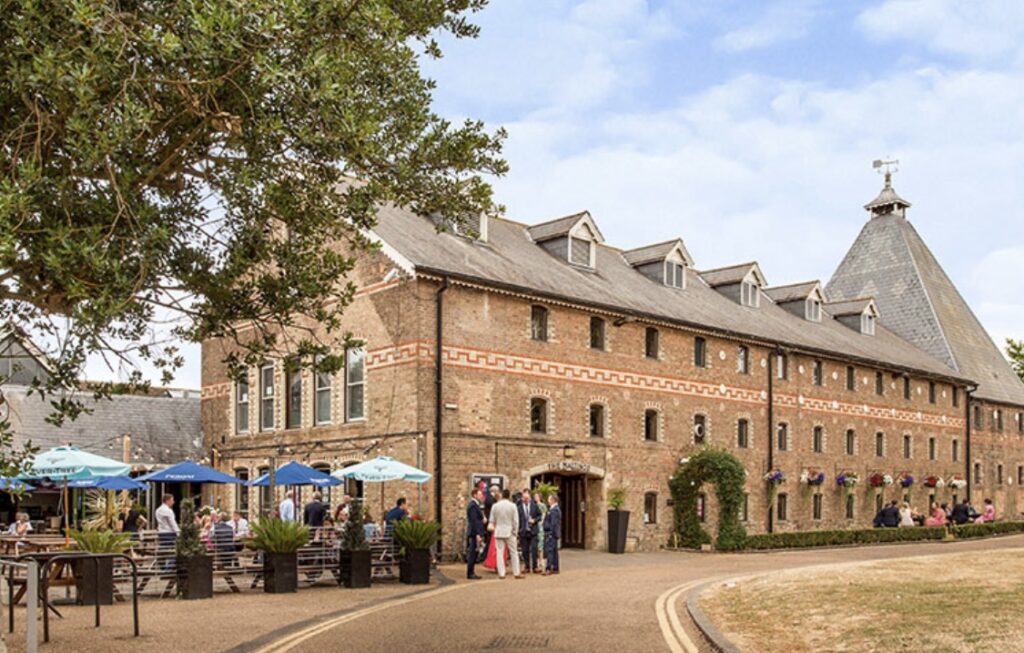
Here’s an one-day itinerary for visiting Ely that includes some light hiking, historical exploration, and local food experiences:
Morning: Ely Cathedral and Historical Sites
- 9:00 AM – Start at Ely Cathedral
- Begin your day at Ely Cathedral, one of the city’s most iconic landmarks. Spend around 1.5 hours exploring the stunning interior, including the Octagon Tower and Lady Chapel. If you’re up for it, climb the West Tower for panoramic views of the surrounding fens.
- 10:30 AM – Visit Oliver Cromwell’s House
- Just a short walk from the cathedral, visit Oliver Cromwell’s House, where the famous figure lived for a time. Take an interactive tour of the house, which lasts about 45 minutes, giving you insight into the English Civil War and Cromwell’s life.
Mid-Morning Hike: Ely Riverside Walk
- 11:30 AM – Riverside Walk
- From Oliver Cromwell’s House, head toward Jubilee Gardens and embark on a 3-mile Ely Riverside Walk along the banks of the River Great Ouse. This easy and scenic trail offers great views of Ely Cathedral from a distance and the charming riverside landscape. The flat terrain makes it a relaxing way to enjoy nature and take in the peaceful atmosphere. This should take about 1.5 hours, depending on your pace.
Lunch: Local Food in Ely
- **1:00 PM – Lunch at *Peacocks Tearoom*
- After your riverside walk, head to Peacocks Tearoom, a renowned spot for lunch. Located near the river, it offers a variety of traditional English dishes, including sandwiches, quiches, soups, and their famous afternoon tea. This will be a great way to experience the local food scene while resting after your walk.
Afternoon: Wicken Fen Nature Reserve
- 2:30 PM – Drive or Cycle to Wicken Fen Nature Reserve
- After lunch, take a short drive (or a 20-minute cycle if you prefer) to Wicken Fen Nature Reserve, one of the oldest nature reserves in England. Here, you can choose a shorter 2-3 mile nature walk through the fenland landscapes, observing the local wildlife, including birds and wild ponies. It’s a gentle hike and a peaceful way to immerse yourself in the unique environment of the Cambridgeshire Fens.
Mid-Afternoon Café Break
- 4:30 PM – Ely’s Market Place or The Almonry Restaurant
- Return to Ely for a late afternoon break. You could explore Ely’s Market Place if it’s market day, or stop by The Almonry Restaurant, located in a beautiful medieval building near the cathedral, for a coffee or light afternoon snack. Their garden offers a tranquil setting with views of Ely Cathedral.
Early Evening: Wrap Up Your Visit
- 5:30 PM – Stroll through Jubilee Gardens
- Before wrapping up your day, take a leisurely stroll through Jubilee Gardens and along the riverside if you haven’t already done so. You can enjoy the serene atmosphere and even spot boats along the river.
Dinner: Taste Local Produce
- 6:30 PM – Dinner at The Old Fire Engine House
- End your day with dinner at The Old Fire Engine House, one of Ely’s best restaurants known for using local, seasonal produce. It offers traditional British dishes with a contemporary twist, and you can often find Fenland specialties on the menu, such as locally sourced meats and vegetables.
Optional Evening Activity
- 8:00 PM – Evening Stroll
- If you’re still up for it, take a gentle evening walk through the city center, perhaps passing the illuminated cathedral before heading back to your accommodation.
This itinerary offers a mix of history, light hiking, and local food experiences, providing a comprehensive day exploring Ely’s cultural and natural highlights.
